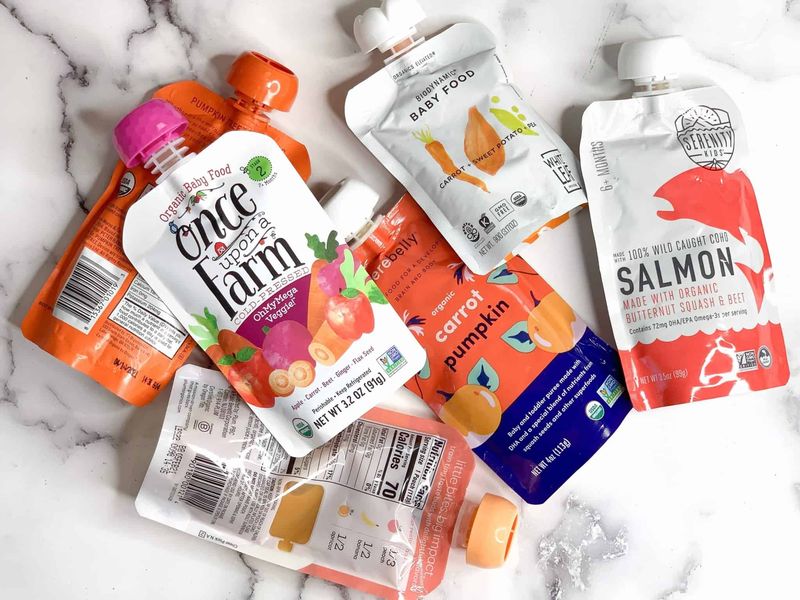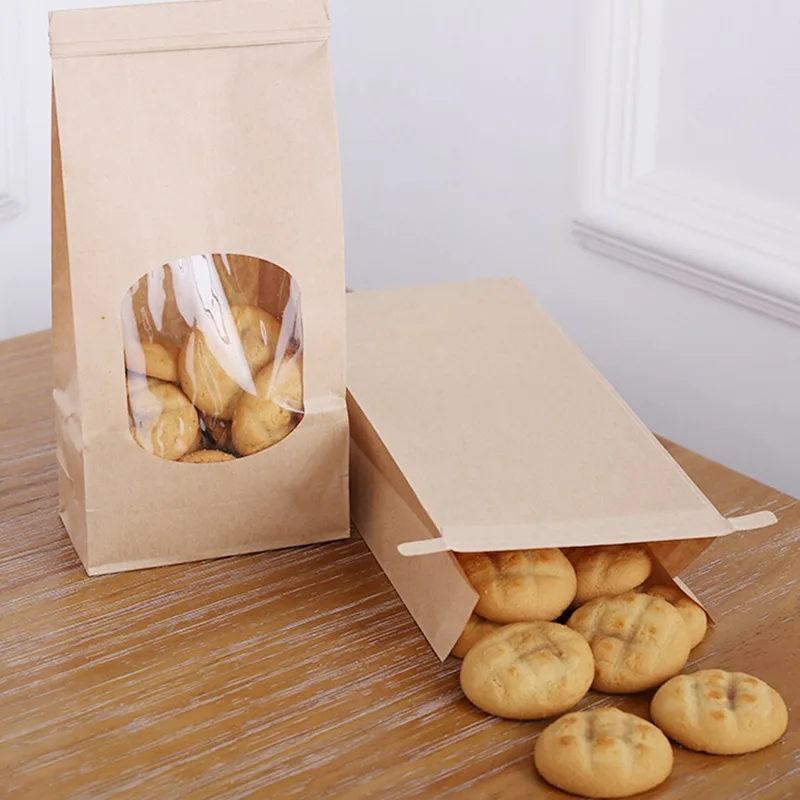introduzione
Food packaging is more than just a vessel to hold your product; it's a powerful marketing tool and a safeguard for food quality and safety. The focus of this guide is to provide an all-encompassing look at food packaging pouches, discussing types, materials, and sustainability measures in-depth.

Types of Food Packaging Pouches
Buste stand-up
Stand-up pouches have gained popularity due to their aesthetic appeal and functional design. With a sturdy base and often coming with a resealable top, they are perfect for a variety of food items such as snacks, grains, and even liquids. The upright design also offers excellent visibility on store shelves.
Flat Pouches
Flat pouches are the go-to choice for single servings or sample sizes of products. These pouches are compact and are often used for condiments, sauces, or instant mixes. The simplicity of their design also makes them cost-effective for businesses.
Retort Pouches
Retort pouches are a fantastic innovation in food packaging, allowing for the thermal processing of food within the pouch itself. This extends the shelf life of the product without requiring refrigeration. They are commonly used for ready-to-eat meals, soups, and sauces.
Spouted Pouches
Primarily used for liquid or semi-liquid food products, spouted pouches come with a resealable spout at the top or the corner of the pouch. This design makes it convenient for repeated use and is particularly popular for items like drinks, sauces, and even baby food.
Vacuum Pouches
Vacuum pouches are designed to remove air from the package before sealing, extending the shelf life of the food item considerably. These pouches are ideal for perishable goods like meat, fish, and some types of dairy.

Materials Used in Food Packaging Pouches
Plastica
Due to its low cost and versatile properties, plastic is the most common material used. However, concerns about sustainability are driving changes in material choice.
Alluminio
Aluminum offers excellent barrier properties against moisture and air but raises environmental concerns due to its recycling complexities and energy-intensive production process.
Bioplastics
Made from renewable resources, bioplastics are becoming increasingly popular as a sustainable alternative to traditional plastics.
Composites
Composite materials often combine the best properties of different materials, like plastic and aluminum, to create a more functional yet challenging-to-recycle pouch.
Design Considerations
Branding and Graphics
Visual elements, including logos, product images, and unique design motifs, play a pivotal role in capturing consumer attention.
Color and Typography
The choice of colors and fonts can subtly convey your brand message and product quality, affecting consumer perception and decision-making.
Informational Labels
Accurate and transparent labeling, covering nutritional facts, ingredients, and usage instructions, is not just a regulatory requirement but also a vital aspect of consumer trust.
Functional Features
Zip Locks
Zip locks add a layer of convenience and functionality, allowing consumers to keep the product fresh after opening.
Tear Notches
These small, pre-cut notches simplify the opening process, enhancing the user experience significantly.
Tamper Evident Seals
Tamper evident seals provide an added layer of security, ensuring that the product has not been interfered with during its journey from the factory to the consumer.
Gas Flush
Some pouches incorporate a gas flush feature that replaces the air inside the pouch with an inert gas, thereby preserving the product's quality for an extended period.

Sustainability in Food Packaging
Opzioni biodegradabili
Several companies are pioneering biodegradable pouch options, usually made from cornstarch or other plant-based materials.
Recyclable Materials
The push for more recyclable packaging options is gaining momentum, fueled by consumer demand and regulatory changes.
Reusable Solutions
Reusable pouches, made from more durable materials, are entering the market, aimed at consumers who are environmentally conscious and willing to invest in sustainable packaging.
Consumer Preferences and Behavior
Importance of Convenience
The modern consumer values convenience, making features like resealable tops and easy-open notches increasingly popular.
Environmental Considerations
With rising awareness about the environmental impact of packaging waste, consumers are more willing than ever to choose eco-friendly options.
Attrazione estetica
A visually appealing package can significantly impact a consumer's decision to purchase, making design elements crucial.
Regulatory Concerns
FDA Compliance
Food packaging must meet FDA standards, which cover everything from the materials used to labeling requirements.
Labelling Requirements
Apart from nutritional facts and ingredients, labels must also include allergen warnings and, in some cases, recycling information.
Future Trends and Innovations
Imballaggio intelligente
Incorporating QR codes or NFC technology allows consumers to access additional product information, recipes, and even verify product authenticity.
Edible Packaging
Emerging as a novel idea, edible packaging offers a waste-free alternative and could be the future of sustainable food packaging.
Sustainability Initiatives
Companies are making strides in adopting circular economy principles, aiming to create packaging that can be easily recycled or composted.
Conclusione
As the world continues to evolve, so does the landscape of food packaging pouches. From different types and materials to an increasing focus on sustainability and consumer preferences, food packaging pouches are more than just containers; they're a significant element in a product's success. As we look ahead, innovations and consumer demands will continue to shape this dynamic industry.
Domande frequenti
- What are the common materials used for food packaging pouches?
- Commonly, plastic, aluminum, and bioplastics are used.
- Are food packaging pouches recyclable?
- It varies, but there is a growing trend towards recyclable and biodegradable options.
- What features enhance the functionality of food packaging pouches?
- Features like zip locks, tear notches, and gas flush improve functionality.
- How important is design in food packaging?
- Design plays a pivotal role in attracting consumers and conveying brand message.
- What are the upcoming trends in food packaging?
- Smart packaging, edible options, and sustainability initiatives are some of the upcoming trends.
So, the next time you're in the grocery store, perhaps you'll look at those pouches on the shelves a bit more thoughtfully, eh?